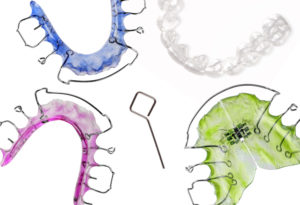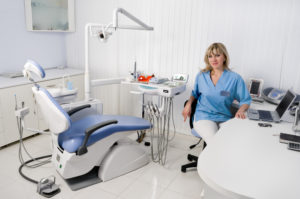Adult treatment – Invisalign and beyond
As an adult, you decide that you want to have the beautiful smile you have always dreamed of. Maybe you missed out on braces as a child; perhaps your teeth looked fine for years, but have worsened over time; perhaps you had braces, but didn’t wear your retainers? Whatever the reason, let us show you how your smile can be improved.
First step – straighten crooked teeth
This is what we do at Invisible Braces. Using Invisible Braces (Invisalign) we can treat crowding, spacing, crossbites, overbites, overjets, open bites, etc.
Some before and after examples:
On average, straightening teeth with Invisible Braces (Invisalign) takes 12-18 months. This is then followed by night-time wear of retainers to hold the teeth in their new positions.
For detailed information about Invisalign Invisible Braces, please visit our FAQ page.
What else can be done?
For many patients, that is all that is needed, but for some there is much more that can be done to make the resulting smile even better. Orthodontists do not work alone – we collaborate with the patient and their dentist to achieve the best result possible. It depends what you want.
Here are examples showing how dentistry can improve your smile, even if you now have straight teeth. These would usually be discussed at your initial consultation in our practice.
Yellowed teeth – can be bleached
Gum disease – needs periodontics
Worn/broken teeth – need repair
Calculus/tartar build-up – needs professional cleaning
1. Bleaching
A simple, safe way to improve the colour of stained or discoloured teeth. You can use your Invisalign Aligners or your retainers to bleach your teeth at home. Bleaching usually takes 1-2 weeks, and lasts 1-5 years between applications.
We can supply, and advise about bleaching products.
2. Gum disease
This is not a single problem, and can range from simple redness and swelling (gingivitis):
to severe periodontitis with bone loss, requiring specialist treatment by a periodontist:
This type of problem can be improved by grafting and other specialist techniques.
For detailed information read these articles from the U.S. National Library of Medicine or the Australian Dental Association (open in new windows).
3. Scaling
Hard deposits called ‘calculus’ form on most people’s teeth, especially around the lower incisors and the upper molars. These range in colour from whitish, to yellow, to black. They are normal – but must be removed.
Brushing will not remove or prevent the formation of calculus (tartar), nor will special toothpastes. Good oral hygiene will reduce the rate of calculus formation.
Once calculus/tartar is present, it needs to be removed professionally by your dentist or hygienist. Usually this will be done, as needed, at your regular dental check up, along with polishing to remove stains.
If left, the light coloured calculus that forms above the gums will lead to gingivitis, and the dark calculus below the gums will cause periodontitis. See Gum diseases above.
4. Cosmetic Dentistry
This is a topic which includes all the above treatments, plus veneers, crowns (caps), bridges, implants, bonding, reshaping, etc – in fact, everything that could be done to make your teeth look better.
It is not possible to cover all this, but here are a few examples.
Repairing worn or chipped teeth
The enamel on the outside of your teeth is very strong (the hardest part of the body) but it is brittle, like glass. Over time enamel can chip or wear down, especially if you grind your teeth or have a bad bite.
After your teeth are straight, your general dentist can smooth or repair these damaged areas with tooth coloured fillings, by bonding or filing.
Reshaping
Here, a small tooth, called a ‘peg lateral’, has been built up to the correct size with a veneer:
If you look closely, you will see that the larger tooth to the left has been smoothed down to improve its shape also.
Veneering
In this example, a discoloured, misshapen tooth has been veneered to improve its colour and shape.
The yellow/brown colour indicates a dead tooth – probably from trauma.
Non-vital bleaching
Sometimes bleaching alone is enough, but this has to be carried out by your dentist
Bleach is placed in the hole in the back of the dead tooth, where the nerve used to be.
5. Replace missing teeth
Missing teeth should be replaced for health as well as looks. Back teeth are essential for good chewing, better digestion, and healthy jaws and muscles. Front teeth are obviously important for aesthetics, but also contribute to good oral health.
There are several options to replace missing teeth, and these should be discussed with your general dentist, or a prosthodontist. Here is a simplified illustration showing two ways to replace a missing back tooth:
6. And beyond?
Beyond the realms of normal dentistry, there are other options to improve your smile, ranging from simple injections of cosmetic fillers or Botox, up to Plastic or Maxillo-Facial Surgery. As a specialist orthodontist these are not procedures we carry out, but we can advise you and provide recommendations or referrals.
For more information, the U.S. National Library of Medicine is a good place to start. Here are some other useful links:
American Association of Oral and Maxillofacial Surgeons
A pdf publication by the Australian Society of Orthodontists
General orthodontic information from the Australian Society of Orthodontists
and from the American Association of Orthodontists
and, finally, a blog about being an Invisalign patient, http://myinvisalignblog.com/about-me
A smile makeover can change the way you look at and to the world. Here are a few “celebrities” before and after.
But don’t overdo things, blindingly white teeth are not found in nature.
Now you know all about how to make a smile better, here is your homework. What can be done for this patient?
Don’t worry – he’s not a real patient. Just a professional photographic model!
Leave a Reply
You must be logged in to post a comment.